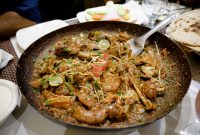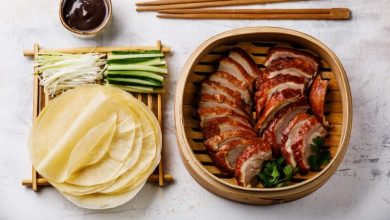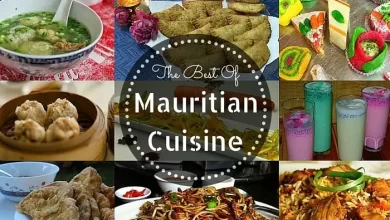hunting for food
Human health is 50 percent determined by nutrition: if you want to live long and high quality, put things in order in your diet, doctors do not get tired of repeating. Yes, we would be happy, but, as they say, the market does not order.
Bread alone
The main trouble of the inhabitants of the republic, and indeed of the whole country, is that we eat very few fruits and vegetables, but we lean on sweet and bakery assortment. This is confirmed even by state nutrition standards: in the modern grocery basket, compared to its Soviet-era counterpart, there is noticeably more flour and much less foods rich in vitamins, minerals and fiber. First of all, the lack of vitamins and minerals, according to doctors, affects the health of children, the elderly and pregnant women.
“One of the most scarce in Bashkiria due to its climatic features is vitamin D, which is found in red varieties of fish, as well as in its liver, butter, milk, cheese, chicken eggs,” says Irina Rakhmatullina, Vice-Rector of the Bashkir State Medical University. – The population has an almost total lack of vitamin B12, the best source of which is animal products.
But they, says the professor, must be consumed wisely: the same meat, for example. Its red varieties (pork, beef, veal and horse meat), which provoke the development of cancer, should not be eaten more than three times a week. It is better to replace them with white meat – chicken breast, turkey, rabbit. You have to be very careful with risk products: salt, sugar, alcohol. An ill-conceived diet is fraught with long-term and very serious consequences for the body.
“As an oncologist, I can give some advice on cancer prevention,” Irina Rakhmatullina notes. – It is extremely important to monitor and maintain weight, be physically active, eat enough vegetables, fruits and whole grains. And fast food – all kinds of fast food and processed foods (subjected to some kind of chemical changes that add a large amount of fat, sugar, sodium and other dangerous substances) – to be excluded.

natural choice?
So, the recommendations of doctors on healthy eating have been received, and you can go shopping. Even to the market, even to the store: we have a huge selection of food.
“The republic produces almost the entire range of food products, completely covering the needs of the population for some of them, for example, for sunflower oil, cucumbers and many others,” said Redner Botulin, Deputy Minister of Agriculture of the Republic of Belarus.
– We are among the leading regions in the production of meat, milk, we have one of the largest herds of horses and very tasty koumiss. Last year alone, more than 152 billion rubles worth of food was produced in the republic. Many enterprises prefer the production of pure, organic products grown without the use of any chemical processing. In stores, including large retail chains, farm departments and shelves are opening, where you can always find natural products that are in increasing demand among buyers.
Yes, not alone. Known, for example, problems with the same koumiss.
“We need to complete the chipping of the horse population and organize electronic veterinary certification of koumiss,” said Redner Botulin. “It will be possible to read the QR code on the bottle using a regular phone and determine which farm the product came from, whether it is a fake or not, right in the store.
More and more questions arise about the quality of another branded Bashkir product – honey, which for a long time was considered the best not only in the country. However, recently the Russian Quality System published the results of a large-scale study of the domestic honey market in more than a hundred indicators. Alas, our honey was not included in the list of high quality products due to the presence of antibiotics in it.
“Bashkir honey, sent for export, does not pass tests in foreign laboratories,” the deputy minister admits.
You can not trust today and dairy products, which until recently was synonymous with health and longevity. All because of the same antibiotics.
“At our enterprise, due to the content of harmful drugs, we deploy at least two batches of milk every month, from a ton to one and a half,” said Ilda Fayzullin, director of the Ufagormolzavod. — Testing for antibiotics is a rather expensive pleasure.

only large processors can afford it. In theory, in order to make a qualitative analysis of raw materials, it is necessary to check it on the farm for the content of at least 50 types of antibiotics. In fact, only four basic analyzes are performed. Test strips for research are too expensive: they are not produced in Russia, only abroad: in China, Belgium and other countries.
According to the head, the milk rejected after checking at the plant sooner or later still finds its buyers. Most likely in small factories, deprived of the opportunity to have their own laboratory. And already in a processed form, but with the same harmful additives, it reaches consumers.
There are especially many doubts near the shelves, even if they are farmers’, with sausage and other processed meat products. The main question that arises among buyers: is there any meat in them at all?
“According to GOSTs, which were adopted in the Soviet Union, there was at least 95 percent of meat in sausage,” Valery Belo, deputy chairman of the State Committee of the Republic of Belarus for Trade and Consumer Rights Protection, answers the question.
– However, over the past years, the standards for preparing one of the most popular types of sausages – “Doctor” – have changed at least a dozen times. And today there is practically no meat in it. That is why I personally buy sausage only from the only trusted republican producer. Yes, but only one type. Why.
do you think, is the production of Belarusian fairs in such demand among the inhabitants of the republic, despite the fact that you cannot call it cheap? Because in Belarus, unlike us, Soviet GOSTs are still in effect.
Liberalization of rather rigid once state standards reduces the quality of a wide variety of products. Even bread. For example, wheat of the fourth class, which has always been considered forage, noted Valery Belo, for some reason moved into the category of food.
And enterprises producing the so-called enriched bread – with vitamins, proteins, and other useful additives, have become many times smaller. Back in 1980, according to experts, the share of improved bread in the country was 40 percent of the total, and today it is only one and a half.



